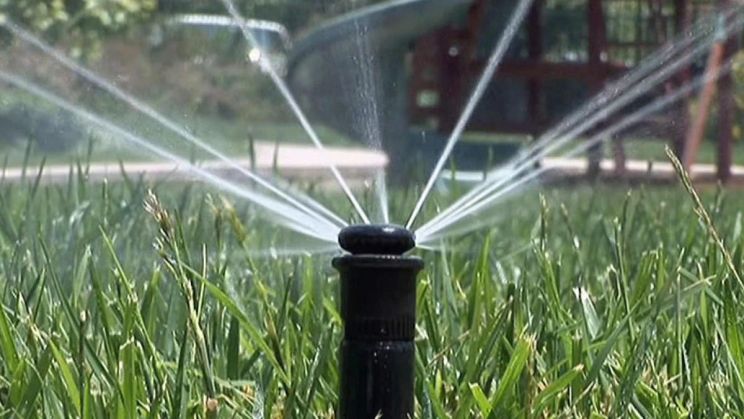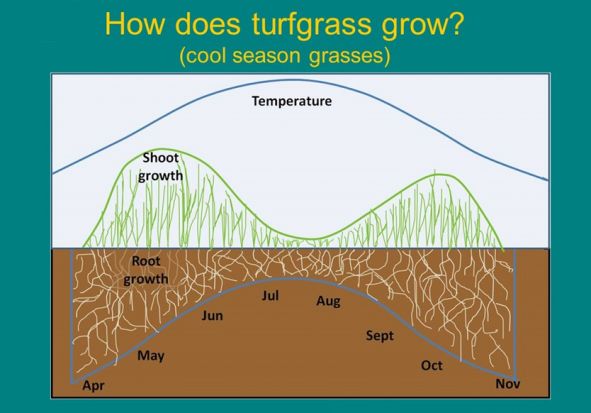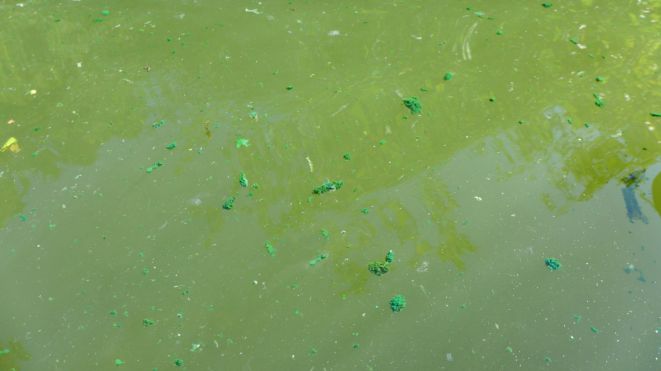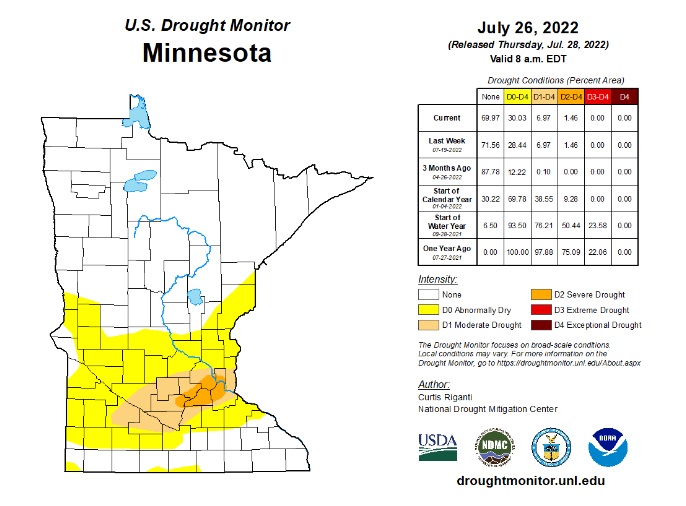Water Tips for Late Summer
Clean Water MN
Turf Care for Late Summer:
In stretches of hot weather, its best not to mow your lawn. The water lost through the fresh cut is difficult for the turf to replace in the midst of summer. Dormant or partly dormant turf can also suffer more damage if it’s mowed, creating more work in re-seeding, nurturing re-growth the following year, and fighting off the weeds that take advantage of the weakened turf. Consider the following tips to maintain a healthy lawn while also supporting the larger watershed your lawn is connected to.

Keep the grass longer, at around 3-4 inches. Higher turf cuts promote deeper root growth into the soil, which gives the turf more access to soil's water and nutrients, and this increases it's ability to tolerate environmental stresses. Generally and over the long term, a higher cut reduces overall maintenance. It does this by blocking sunlight from reaching the soil and maintaining a dense cover on the surface, which suppresses weed germination. Longer grass also stays greener and needs to be mowed less frequently, especially in the mid to late summer when cool season grasses (most turf varieties) are largely halted in their growing.

Image: MPCA
Keep your mower blades sharp. Keeping blades sharp will help cut the grass cleanly rather than tearing and shredding that comes with using a dull blade. This cuts down on the amount of water lost from the plant, reducing the need for additional watering.
Mulch clippings. Rather than bag your grass clippings, mulch and leave them on site. This provides a natural fertilizer.
Keep grass clippings out of ditches, wetlands, streams, and the downslopes leading to waterbodies. Check out our Responsible Yard Waste Disposal sheet for info and guidance.
Water wise. Lawns typically don't need more than 1 inch of water per week. Water in the morning or evening to reduce evaporation. Select a sprinkler that disperses water lower and in drops instead of high in a mist.
Sweep up. Sweep clippings off sidewalks and out of streets. If left get washed into stormdrains and on to lakes and creeks where they become pollution.
Switch to fescues. Switch from traditional Kentucky bluegrasses to fescues. Fescues grows slow, requiring less mowing, and are drought tolerant. You can learn more about fescues and sustainable lawn care practices on the U of M Extension website.
Find more on summer yard care on our residents page.
Following these tips won't just make a great impact on the environment, but it can also make a great impact in your summer free time!
Lake Notes for Late Summer:
Shallow lakes are a hotbed of activity during the summer months. Unlike deep lakes common to northern Minnesota, shallow lakes and wetlands are heavily impacted by sunlight. Instead of maintaining cool depths like a deep lake, shallow lakes warm up from the lake bed to the surface. In addition, wind and wave action can stir up more sediment in a shallow lake, bringing more nutrients into the water column. This creates a favorable environment for plants and algae that specialize in warm water with plenty of nutrients up for grabs.

Late summer’s warm temperatures create favorable conditions for a variety of algae and other aquatic plant life. Blue-green algae can create certain strands of cyanobacteria that are toxic to people, pets, and fish. Large amounts of algae can also consume large amounts of oxygen in a lake, causing fish kills. Sometimes distinguishing between algae and aquatic plants is tricky, but with a little practice it can be easy to tell what's a common late summer shallow lake and what's a potential cause for concern.
Download the VLAWMO Aquatic Plants and Algae Guide for more info and images for comparison.
Visit our residents page for more on what you can do to help support the health of shallow lakes, wetlands, and streams.
Water Conservation for Late Summer:
As of July, 2022, most of the Twin Cities Metro is under “moderate drought” conditions (MN DNR). While this is an improvement from the severe and extreme drought of summer, 2021, the region is still recovering from the drought. Continuing to practice water conservation and wise water use today directly supports groundwater in future periods of drought and stress.

Link to the latest Minnesota drought information at the DNR Drought Conditions Overview
Tips for helping conserve water at home:
- Water yard plants low to the ground. When watering select garden trees or plants to reduce their stress from drought, maximize efficiency by holding the hose near or on the ground. The best water-efficient sprinklers spray low to the ground and don’t spray in a mist.
- Never water pavement. Fixing errant sprinkler heads is an easy task with a little research or a call to an irrigation specialist.
- Water slowly. When soil is dry and hardened, more water runs off the surface and potentially into the street.
- Keep a pitcher of cold water in the fridge to reduce time spent waiting at the faucet for water to reach a desired drinking temperature. Similarly, place a pot or large bowl in the sink when running the faucet and waiting for it to warm up. You’d be surprised how quickly a pot fills!
- Take cold(er) showers. A colder shower is a shorter shower! (For most folks).
- Try turning off the shower water when lathering, or use a bucket to put a cap on water use or water outdoor plants with the extra bucket water (if its not too soapy).
- Reduce car washing and other non-essential water uses during dry times
- Embrace the natural ability turf grass has in going dormant. Maintaining a green lawn during a drought is unrealistic and not necessary to keep the lawn alive.
- Find more tips and calculate your home water use here.
Drought and water level resources:
- Find public data from groundwater observation wells near you: Cooperative Groundwater Monitoring
- MN DNR Drought Conditions Overview
- Find national drought updates at the U.S. Drought Monitor website.
- Check Lambert Creek flow rates and water levels through real-time remote creek monitoring: Lambert Creek webpage

